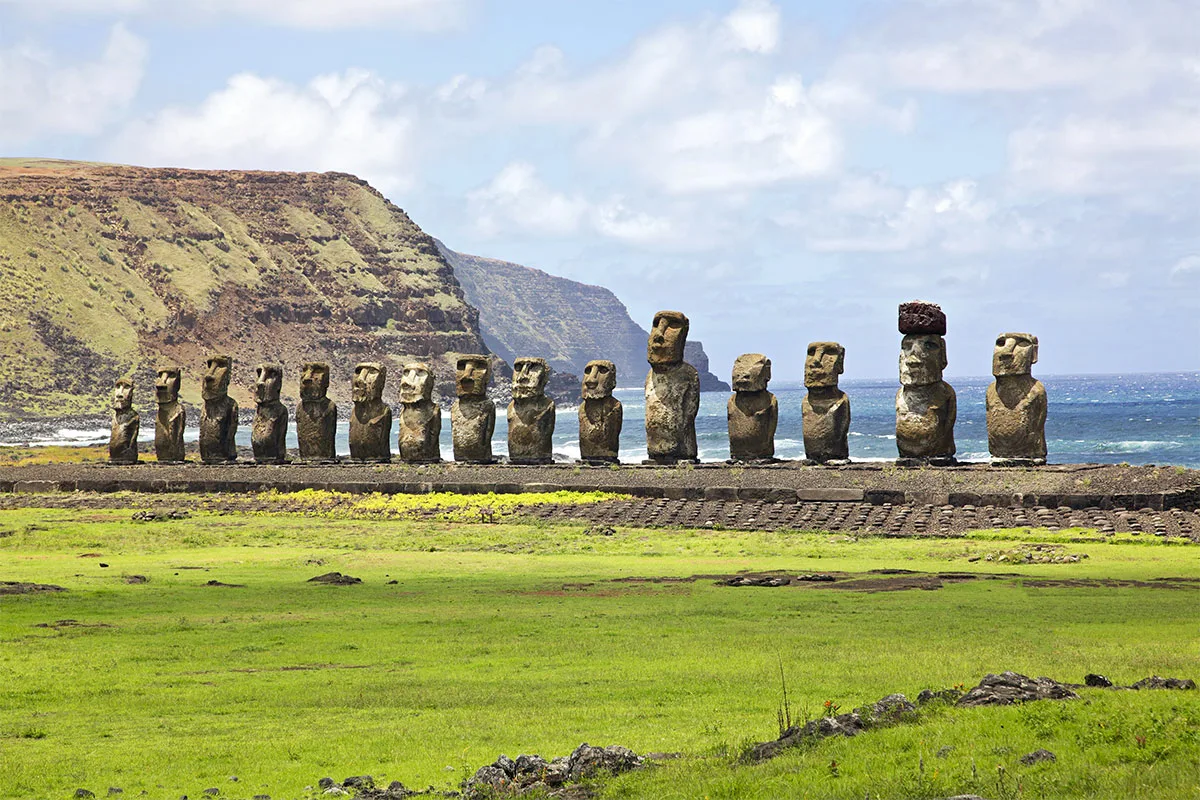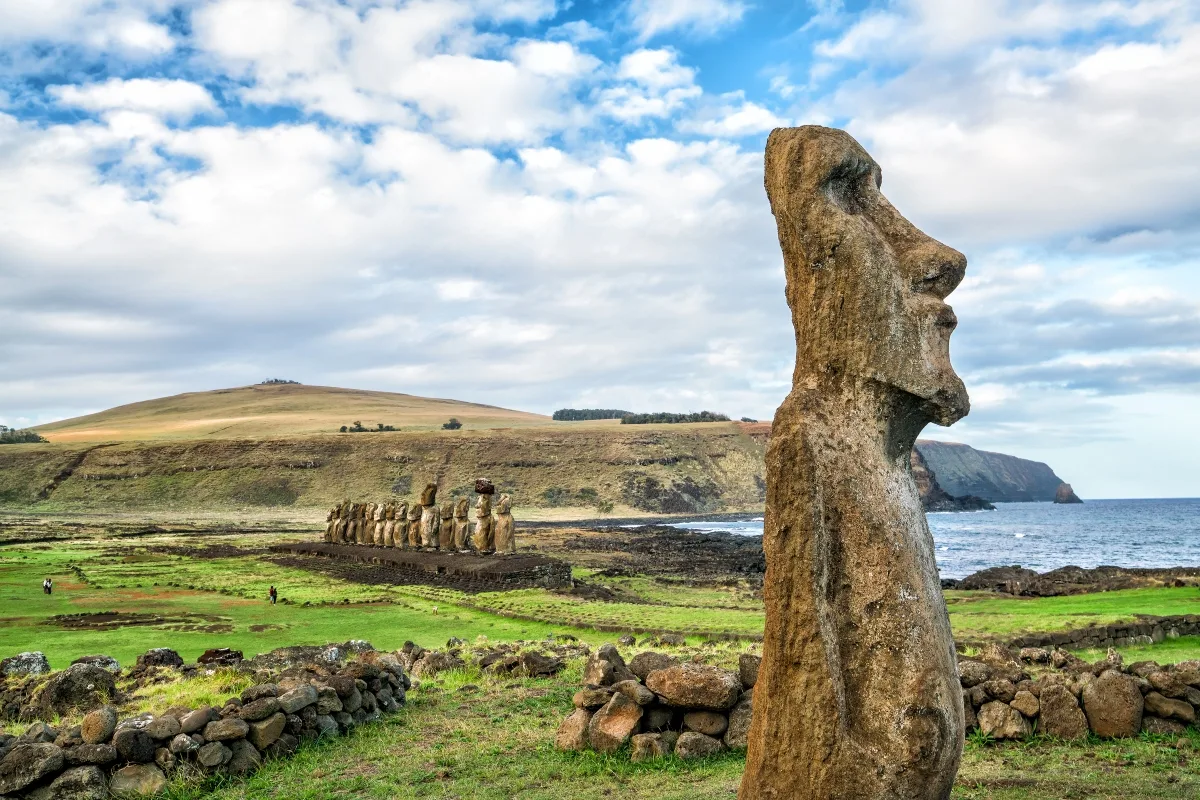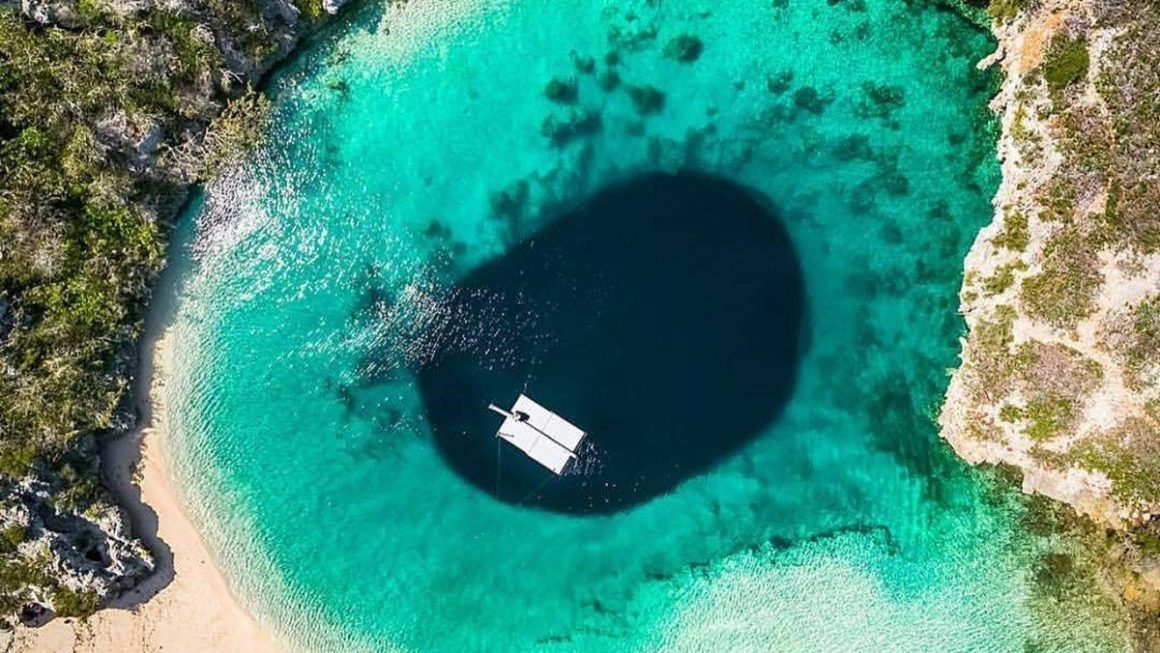Physics has confirmed it. They have managed to reproduce the controlled swaying motion that allowed the colossal statues on Easter Island to be moved, putting an end to eight centuries of mystery.
A combination of archaeology, physics and technology confirms that the stone giants of Easter Island (in Chile) were moved vertically. For centuries, the colossal stone statues known as moai have been one of the greatest archaeological enigmas on the planet.
How did an isolated civilisation, without wheels, draught animals or cranes, manage to move sculptures weighing up to 80 tonnes over several kilometres of rough terrain on the remote Easter Island (Rapa Nui)? Now, a multidisciplinary team of scientists has solved this mystery. The moai “walked”, and researchers have proven it.
An unanswered question
Between the 13th and 16th centuries, the Polynesian inhabitants of Rapa Nui carved nearly 1,000 moai from volcanic tuff extracted from the Rano Raraku volcano. Although they look like heads, many of these statues have full bodies, buried by centuries of sediment. These spectacular statues are representations of deified ancestors and were placed on ceremonial platforms called ahu, facing the villages in order to protect them spiritually. But the real mystery has always been how these spectacular carvings were moved from the quarry to these altars, some located more than 10 km away. After centuries of enigma, we now know the answer.
The theory that they ‘walked’ was not a myth
Oral legends of the Rapa Nui spoke of statues that ‘walked alone,’ guided by the mana (spiritual power) of their ancestors, something that for a long time was considered pure mythology. However, the new study has shown that the ancient islanders were not exaggerating. The team led by archaeologists Carl Lipo (from Binghamton University) and Terry Hunt (from the University of Arizona) used 3D modelling, physical analysis and field experimentation to test the so-called ‘walking moai hypothesis’.
After digitally scanning more than 900 moai, the experts discovered key features in their design: a D-shaped (semicircular) base, a forward tilt of between 5° and 15°, and a low centre of gravity. These features were not accidental: they were designed to allow for side-to-side swaying movement.
New research reveals that the moai statues on Easter Island were built to walk upright by swaying rhythmically.
To test the hypothesis, the researchers built a 4.35-tonne replica moai with the same proportions and demonstrated that with only 18 people and using three ropes, it was possible to make it “walk” 100 metres in just 40 minutes. The method consisted of pulling alternately from both sides, causing the statue to sway and move forward in a zigzag pattern, as if it were taking steps. According to the scientists, this method is energy efficient and relatively fast.
‘Once you get it moving, it’s not difficult at all: you pull with just one arm. It saves energy and moves very quickly,’ explains Carl Lipo, co-author of the study published in the Journal of Archaeological Science. ‘The hard part is getting it to sway from the beginning. The physics makes sense. What we saw experimentally works.’
Another key finding was the analysis of the island’s ancient road network. These roads, about 4.5 metres wide and concave in profile, were perfect for stabilising the statues during transport. “Every time they move a statue, it looks like they’re building a road. The road is part of the movement of the statue,‘ said Lipo, explaining that these people constantly cleared a path and worked on it sequentially as the statues advanced. ’All kinds of stories have been invented about plausible or possible things, but the evidence is never evaluated to show that, in fact, you can learn about the past and explain the observed record in completely scientific ways.”

And what about the fallen statues?
One of the common objections to the ‘walking moai’ hypothesis was the existence of fallen statues along the roads. But there is also an explanation for this: many of these statues show signs of having been straightened or at least attempted to be straightened, suggesting that they fell during vertical transport. Furthermore, the distribution of unfinished moai near the quarry follows an ‘exponential decay’ pattern, which is common in logistical failures in mechanical transport systems; that is, the further away a moai was moved from the quarry, the more likely it was that something would go wrong.
‘It shows that the people of Rapa Nui were incredibly intelligent. They figured it out,’ said the expert. ‘They are doing it in a way that fits the resources they have. So it really honours those people, saying, “Look what they achieved, we have a lot to learn from them in these principles”.’
Thus, far from presenting themselves as an irrational or decadent civilisation, the inhabitants of Rapa Nui have proven to be intelligent and to have a deep understanding of physics, balance and materials without the need for sophisticated tools.




